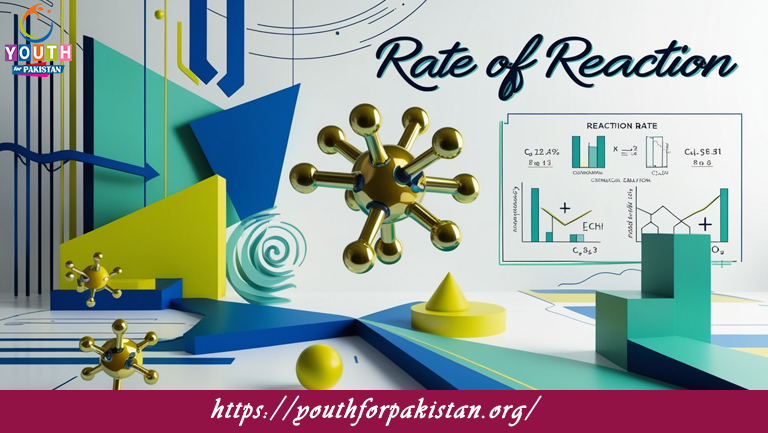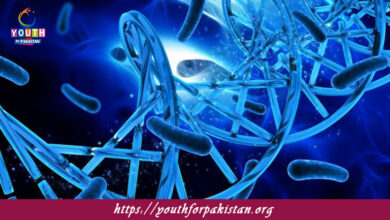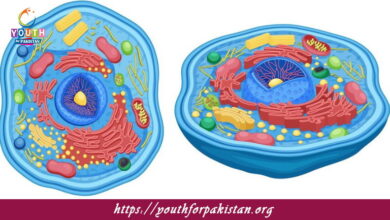Rate Of Reaction MDCAT MCQs with Answers

Welcome to the Rate Of Reaction MDCAT MCQs with Answers. In this post, we have shared Rate Of Reaction Multiple Choice Questions and Answers for PMC MDCAT 2024. Each question in MDCAT Chemistry offers a chance to enhance your knowledge regarding Rate Of Reaction MCQs in this MDCAT Online Test.
The rate of a chemical reaction is defined as:
a) The change in concentration of products per unit time
b) The change in temperature per unit time
c) The change in pressure per unit time
d) The change in volume of reactants per unit time
The rate of a reaction generally increases with:
a) Decreasing temperature
b) Increasing concentration of reactants
c) Increasing volume of the reaction mixture
d) Decreasing surface area of the reactants
The rate of a reaction can be expressed in terms of:
a) The rate constant only
b) The concentration of products only
c) The change in concentration of reactants or products over time
d) The equilibrium constant only
The rate of a reaction is affected by:
a) Temperature
b) Concentration of reactants
c) Presence of a catalyst
d) All of the above
A catalyst affects the rate of a reaction by:
a) Increasing the activation energy
b) Decreasing the activation energy
c) Changing the equilibrium position
d) Increasing the concentration of reactants
The rate of a reaction can be measured by:
a) The amount of gas evolved
b) The change in color of the reaction mixture
c) The change in pressure of the reaction vessel
d) All of the above
For a reaction where the rate doubles when the concentration of reactants is doubled, the reaction is:
a) Zero-order
b) First-order
c) Second-order
d) Third-order
The half-life of a reaction is:
a) The time required for half of the reactant to be consumed
b) The time required for the reaction to reach equilibrium
c) The time required for the reaction rate to double
d) The time at which the reaction stops
The rate constant of a reaction is:
a) Independent of temperature
b) Dependent on the concentration of reactants
c) Specific to a given reaction and changes with temperature
d) The same for all reactions
The method of initial rates involves:
a) Measuring the concentration of reactants at equilibrium
b) Measuring the rate of reaction at different temperatures
c) Measuring the rate of reaction at the beginning of the reaction when the concentration of reactants is known
d) Measuring the rate of reaction after it has reached equilibrium
In a zero-order reaction, the rate of reaction:
a) Increases linearly with the concentration of reactants
b) Decreases as the concentration of reactants increases
c) Is independent of the concentration of reactants
d) Is proportional to the square of the concentration of reactants
The rate law for a reaction is determined by:
a) The stoichiometry of the reaction
b) Experimental data showing how the rate changes with concentration
c) The equilibrium constant of the reaction
d) The temperature of the reaction
In a first-order reaction, the rate constant
k can be determined from:
a) A plot of
[
A
]
[A] versus time
b) A plot of
ln
[
A
]
ln[A] versus time
c) A plot of
1
[
A
]
[A]
1
versus time
d) The slope of the plot of
[
A
]
[A] versus time
ln
[
A
]
ln[A] versus time
For a second-order reaction, the half-life is:
a) Independent of the initial concentration of reactants
b) Directly proportional to the initial concentration of reactants
c) Inversely proportional to the initial concentration of reactants
d) Constant regardless of initial concentration
The integrated rate law for a zero-order reaction is given by:
a)
[
A
]
=
[
A
]
0
−
[A]=[A]
0
−kt
b)
ln
[
A
]
=
ln
[
A
]
0
−
ln[A]=ln[A]
0
−kt
c)
1
[
A
]
=
1
[
A
]
0
+
[A]
1
=
[A]
0
1
+kt
d)
[
A
]
=
[
A
]
0
−
[A]=[A]
0
e
−kt
[
A
]
=
[
A
]
0
−
[A]=[A]
0
−kt
The rate of reaction is proportional to the concentration of reactants raised to the power of their stoichiometric coefficients in the:
a) Rate law
b) Equilibrium constant
c) Activation energy
d) Half-life expression
For a reaction at equilibrium, the rate of the forward reaction equals the rate of the reverse reaction. This is known as:
a) The law of mass action
b) The principle of microscopic reversibility
c) The rate law
d) Dynamic equilibrium
The effect of increasing the temperature on the rate of reaction is explained by:
a) The Arrhenius equation
b) The Nernst equation
c) The Van der Waals equation
d) The ideal gas law
The rate constant
k can be found from the slope of a plot of
ln
[
A
]
ln[A] versus time for:
a) A zero-order reaction
b) A first-order reaction
c) A second-order reaction
d) A third-order reaction
The rate of reaction is measured in terms of:
a) Molarity per unit time
b) Volume per unit time
c) Pressure per unit time
d) Temperature per unit time
In a second-order reaction, the rate constant
k is determined from:
a) A plot of
[
A
]
[A] versus time
b) A plot of
ln
[
A
]
ln[A] versus time
c) A plot of
1
[
A
]
[A]
1
versus time
d) A plot of
[
A
]
2
[A]
2
versus time
1
[
A
]
[A]
1
versus time
The method of continuous variations involves:
a) Varying the concentration of one reactant while keeping others constant
b) Measuring the rate of reaction at different temperatures
c) Measuring the change in concentration of reactants at equilibrium
d) Observing the change in color of the reaction mixture
The rate of reaction can be affected by:
a) The surface area of solid reactants
b) The nature of the reactants
c) The pressure of gaseous reactants
d) All of the above
In a reaction where the rate law is
Rate
=
[
A
]
2
[
B
]
Rate=k[A]
2
[B], the reaction is:
a) Second-order overall
b) Third-order overall
c) Fourth-order overall
d) First-order overall
The activation energy of a reaction can be determined by:
a) The slope of a plot of
ln
lnk versus
1
/
1/T
b) The intercept of a plot of
ln
[
A
]
ln[A] versus time
c) The slope of a plot of
[
A
]
[A] versus time
d) The intercept of a plot of
1
[
A
]
[A]
1
versus time
ln
lnk versus
1
/
1/T
The rate of a reaction can be increased by:
a) Decreasing the surface area of solid reactants
b) Decreasing the concentration of reactants
c) Increasing the temperature
d) All of the above
The method of initial rates helps in determining:
a) The equilibrium constant of the reaction
b) The order of the reaction with respect to each reactant
c) The activation energy of the reaction
d) The final concentration of reactants
The rate of a reaction in terms of a gas can be measured by:
a) The change in volume of the gas produced
b) The change in pressure of the gas
c) The change in color of the reaction mixture
d) The change in temperature of the reaction mixture
The rate constant of a reaction increases with:
a) Increasing concentration of reactants
b) Increasing surface area of reactants
c) Increasing temperature
d) Increasing pressure of the reaction mixture
For a zero-order reaction, the rate of reaction is:
a) Directly proportional to the concentration of reactants
b) Inversely proportional to the concentration of reactants
c) Independent of the concentration of reactants
d) Proportional to the square of the concentration of reactants
The reaction rate is often measured in:
a) Moles per liter per second
b) Liters per mole per second
c) Moles per liter per minute
d) Moles per liter per hour
In a reaction where the concentration of reactants is halved and the rate is quartered, the reaction is:
a) First-order
b) Second-order
c) Third-order
d) Zero-order
The rate of reaction can be determined using:
a) A spectrophotometer
b) A gas syringe
c) A pressure sensor
d) All of the above
The effect of a catalyst on the reaction rate is to:
a) Increase the equilibrium constant
b) Decrease the activation energy
c) Increase the concentration of reactants
d) Decrease the concentration of products
The rate of reaction is typically:
a) Lower at higher temperatures
b) Higher at lower temperatures
c) Higher at higher temperatures
d) Unaffected by temperature changes
The half-life of a first-order reaction is:
a) Dependent on the initial concentration of reactants
b) Constant and independent of the initial concentration of reactants
c) Inversely proportional to the concentration of reactants
d) Directly proportional to the rate constant
For a reaction that produces a gas, the rate of reaction can be studied by:
a) Measuring the change in gas volume over time
b) Measuring the change in reaction temperature
c) Measuring the change in pH of the reaction mixture
d) Measuring the change in color of the reaction mixture
The rate of reaction depends on:
a) The nature of the reactants
b) The concentration of reactants
c) The temperature of the reaction
d) All of the above
The rate constant of a reaction decreases with:
a) Increasing temperature
b) Decreasing temperature
c) Increasing pressure
d) Increasing concentration of reactants
The effect of surface area on the rate of reaction is particularly noticeable in:
a) Gas-phase reactions
b) Liquid-phase reactions
c) Solid-phase reactions
d) Solution-phase reactions
If you are interested to enhance your knowledge regarding Physics, Chemistry, Computer, and Biology please click on the link of each category, you will be redirected to dedicated website for each category.





